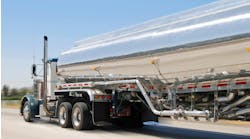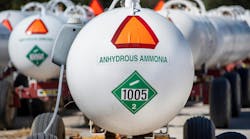“If You are in the tank terminal market and you are not having a good time right now, then something is wrong. This industry is stronger than it has ever been, and it is growing worldwide.”
That was how Tony Quinn, chief executive officer of Global Storage Agency Ltd, summarized the state of the independent liquid terminal industry during his presentation “The Global Expansion of the Tank Storage Industry and the Outlook for the Future. Quinn was a speaker at the International Liquid Terminals Association's 29th annual International Operating Conference.
Quinn emphasized that independent storage terminals in many parts of the world are weathering the current recession very well, and many facilities are at or near capacity. Demand for crude oil storage has been particularly strong.
“This is a recession-proof business,” he said. “Independent terminal operators are doing well. They are profitable, and they are growing. Tank storage has shown solid stability in an uncertain, chaotic world.”
New investors
The industry is doing well enough that it is drawing new infrastructure investors. Among them fund managers, such as Macquarie, Challenger, First Reserve, and 3i Infrastructure.
In all, these infrastructure fund managers have acquired bulk liquid storage capacity in the 20 million cubic meters (52.8 million gallons) range. Total value of these investments is in the $3.6 billion range.
Much of the money for these investments is coming from pension funds — particularly government employee pensions. The Organization for Economic Co-Operation and Development estimates that these funds now total $16.2 trillion worldwide.
Recent estimates put the pension fund investments in listed infrastructure companies and funds (such as toll road operations) at around $400 billion, according to Quinn. Increasingly, however, pension funds are diversifying into unlisted infrastructure, which includes storage terminals. Eighteen unlisted infrastructure funds raised $35 billion for investment in 2007, and 71 news funds (with a $90 billion target) entered the market in 2008.
“The pension funds are looking to invest in a business with stable, predictable returns,” Quinn said. “They want income streams that are less sensitive to fluctuations in business cycles. They like high barriers to entry and inelastic demand for services. They want investments that are capital intensive and therefore have higher operating margins.”
The storage terminal industry meets those objectives, and storage terminals have been relatively inexpensive compared with other infrastructure assets, particularly ports. Storage terminal EBITDA multiples have been increasing but generally remain well below comparable multiples for container and dry bulk terminals. Storage terminal EBITDA multiples for 2007 were in the 10x range.
Other upside factors for tank storage terminal investments include a realization that demand will remain strong for strategically located marine storage terminaling capacity. On the downside, capital costs have increased and lower global gross domestic product could have a negative impact on demand for storage.
Global demand
Even with the current economic recession, global storage terminal demand is growing. The global storage terminal market currently has available approximately 2.75 billion cubic meters (726.4 billion gallons) of capacity. That equates to roughly 60 days of total refinery throughput, Quinn said. Independent operators provide tankage for about 380 million cubic meters (100.3 billion gallons).
Worldwide, about 115 companies operate independent storage terminals. The 15 largest operators account for 26% of the world's independent tank storage capacity. However, that is less than 4% of the world's total storage tank capacity.
A third of the world's storage terminals are in the United States, making that the largest single market. Most of the US-based independent storage terminal operators have focused on the US market, but that is changing, according to Quinn. More US companies are now looking overseas for expansion.
What they and other investors see are some excellent opportunities. In Europe, 12 new storage terminals are under construction and another 16 are in the planning stages. Rotterdam in The Netherlands is one of the most active areas of Western Europe with five terminals under construction and more storage being added at existing facilities.
Poland offers some good investment opportunities, particularly in chemical storage. “Some of the best-quality chemical storage tanks I've seen are in Poland,” he said. “Polish companies have made some of the biggest storage tank investment of anywhere in Europe.”
The United Kingdom has a relatively small storage terminal market, but Quinn believes there is a number of areas across the country that offer good potential for development. The Baltic States are another area with promising investment opportunities in the storage terminal sector.
Asia growth
Turning to Asia, he said China is an interesting storage terminal market that should attract more foreign investment in coming years. Companies in Korea have built a significant amount of new storage for chemicals, and the tanks are full. Singapore has one of the most extensive storage terminal systems in Asia, and more capacity is under construction. This includes a network of underground storage caverns.
Then there is India, which Quinn called one of the most promising emerging markets in the world. “This is a phenomenal growth market for storage terminals,” he said. “Aviation fuel demand alone is growing by 15% a year, and fuel demand for other sectors also is climbing. India's infrastructure is a mess. Right now, India offers a big storage terminal investment potential. They need big players to enter the market. This is the time to act.”








